Phalloid Amanita: [Characteristics, Effects, Prevention and Reproduction]
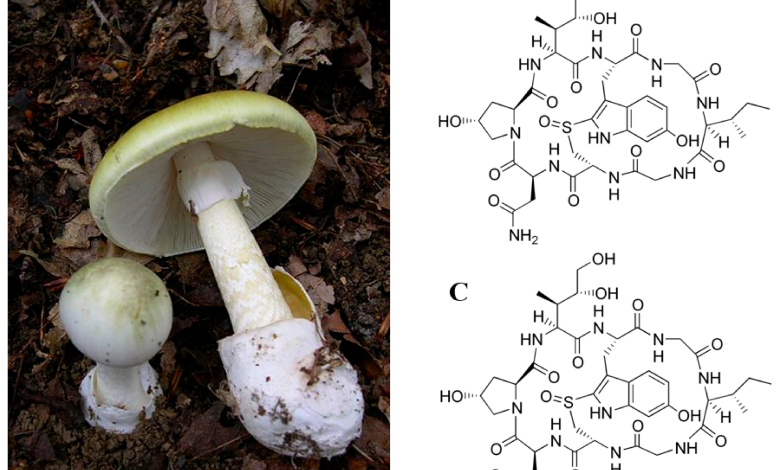
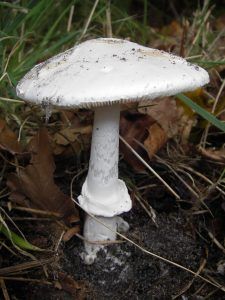 One of the most dangerous species of mushrooms in the world is the Amanita Faloides and it is of high risk because it can be confused with other species.
One of the most dangerous species of mushrooms in the world is the Amanita Faloides and it is of high risk because it can be confused with other species.
Yes, just as you are reading it. It is a mushroom with toxins inside that are harmful to human health.
The worst thing is that these toxins are resistant to high temperatures, so they will not be destroyed even if you put them directly on the grill.
How to differentiate them, what damage does it cause if consumed and in which regions does it normally live? We will answer all these frequently asked questions below. Let’s see it.
What characteristics does the phalloid amanita have?
Defining the characteristics that accompany this species is the first step to identify it. Here we have:
- Hat: it is similar to that of many other species and is olive green.
- Foot: it is more or less thick, with a bulb structure at its base.
- Ring: present in a location greater than half its height.
- Toxins: in its structure it presents toxins of three types: phalloidins, amatoxins and phallolisins.
How to differentiate the phalloid amanita?
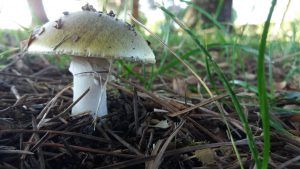 The biggest problem that exists in differentiating Amanita Faloides is that its structure is very similar to other species such as Russula and Agaricus.
The biggest problem that exists in differentiating Amanita Faloides is that its structure is very similar to other species such as Russula and Agaricus.
In fact, it is also similar to other species of Amanita (virosa and verna) that are equally harmful to health.
In these last cases, although the foot and the ring are similar, it is possible to show a variation in the color of the hat. In the case of Amanita Virosa it is yellow, while Amanita Verna is white.
What causes phalloid amanita?
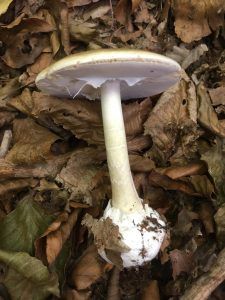 The Amanita Faloides is a mushroom that after consumption becomes deadly and the reality is that it is not necessary to consume a large quantity, just one is enough.
The Amanita Faloides is a mushroom that after consumption becomes deadly and the reality is that it is not necessary to consume a large quantity, just one is enough.
This deadly action is produced by the amatoxins. For their part, phallotoxins exert considerable damage on the digestive system, causing the loss of protective mucous membranes.
Therefore, the body is more exposed to absorb anatoxins and suffer their damage. Now, all this does not happen immediately, but has an attack process that can last up to several days.
In the first few hours, the body will feel normal even though the disintegration process of the internal mucous membranes has already begun. About a day later, symptoms associated with gastric problems begin to appear, with pain, vomiting, nausea and diarrhea.
At this point, if not properly cared for, proper electrolyte levels may be lost and the body may become unbalanced. If the gastric state is treated, it will happen that the body will show a small improvement in the following days.
By the 5th day the problem will have advanced to surprising levels, manifesting itself through damage to the liver and kidneys. If the amount of Amanita Faloides consumed is very large, the whole process is accelerated and liver and kidney manifestations will occur on the 2nd day.
How can amanita phalloid poisoning be prevented?
Prevention only applies to the way mushrooms are obtained for consumption. Here it is essential that only those that meet the following requirements are eaten:
- They have been collected by a person with sufficient knowledge of the different types of mushrooms to be able to differentiate the edible ones from those that are toxic.
- They arise from a process of sowing and development in home gardens.
- They come from purchases in certified food establishments that take very good care of the type of products they offer to the population.
It is important that mushrooms that have a doubtful origin or where there is confusion when verifying their characteristics are not consumed.
Where does phalloid amanita grow?
Its natural habitat is very variable, being distributed in almost all of Europe with pre-eminence in the southernmost areas. Like most fungi, it enjoys wooded environments with large trees that provide shade, such as beeches and oaks.
The transport of these kinds of trees has also allowed it to spread to other continents, such as North America and Oceania, especially New Zealand.
How does the phalloid amanita fungus reproduce?
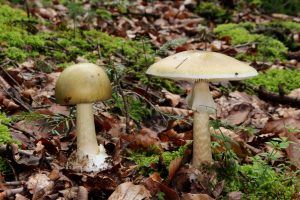 The Amanita Faloides reproduces by means of spores that are distributed very easily thanks to the action of the wind or the transport of animals.
The Amanita Faloides reproduces by means of spores that are distributed very easily thanks to the action of the wind or the transport of animals.
These spores are called basidiospores, which are not the only part of the structure but also have a carpophore. Both are joined by a hymenophore.
However, upon reaching a space with optimal environmental conditions, the spores begin the work of reproduction by creating a mycelium. The first stage of the process occurs underground, in the second, the fungus begins to appear on the surface and form its characteristic structure.
Although less common, this kind of fungus is also capable of reproducing through fragmentation.
What other names does the phalloid amanita receive?
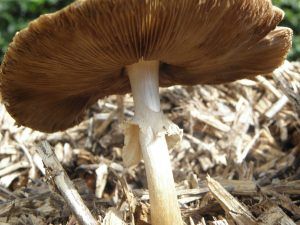 Due to its harmful action on the organism, the common names with which it can be known are: the fungus of death, devil’s mushroom, deadly cape cap or death’s hat.
Due to its harmful action on the organism, the common names with which it can be known are: the fungus of death, devil’s mushroom, deadly cape cap or death’s hat.
However, in some places they can also refer to him as green oroja or green hemlock, due to the characteristic color of his hat.
There is no common human treatment for consumption that will prevent Amanita Phalloides from losing its toxicity level. This means that even if it is cooked at high temperatures, washed with strong products such as vinegar, or dried, it will still be toxic.
In addition, its process of negative action on the body is one of the most dangerous that exists due to the latency time it handles, which prevents acting in time. In any case, it is necessary to warn that it will only be possible to counteract the harmful effects when actions are taken in the first 24 hours.
Knowing that most affected people take it by mistake, such a quick response is very difficult.
Bibliographic references
- Amanita phalloides poisoning, LK French, RG Hendrickson, BZ Horowitz – Clinical Toxicology, 2011 – Taylor & Francis
- The Toxicology of Amanita phalloides, MS Bonnet, PW Basson – Homeopathy, 2002 – thieme-connect.com
- Poisoning with Amanita phalloides: series of three cases, S Cortese, M Risso, JH Trapassi – Acta toxicológica argentina, 2013 – toxicologia.org.ar
- Amanita phalloides poisoning, diagnosis and treatment, M Talamoni, S Cabrerizo, C Cari, M Diaz… – Argentinian files of…, 2006 – sap.org.ar
- Acute liver failure and other disorders caused by the consumption of Amanita phalloides, M Barquero, P Bolaños – Legal Medicine of Costa Rica, 2016 – scielo.sa.cr

![Photo of Prune almond trees: [Importance, Time, Considerations and Steps]](https://www.complete-gardening.com/wp-content/uploads/2022/08/prune-almond-trees-importance-time-considerations-and-steps-390x220.jpg)
![Photo of How to Plant Hibiscus in your Garden: [Complete Guide]](https://www.complete-gardening.com/wp-content/uploads/2022/08/how-to-plant-hibiscus-in-your-garden-complete-guide-390x220.jpg)
![Photo of Indoor Hanging Plants: [15 Examples + Care, Watering and Substrate]](https://www.complete-gardening.com/wp-content/uploads/2022/08/indoor-hanging-plants-15-examples-care-watering-and-substrate-390x220.jpg)
![Photo of Sainfoin: [Characteristics, Cultivation, Care and Disadvantages]](https://www.complete-gardening.com/wp-content/uploads/2022/08/sainfoin-characteristics-cultivation-care-and-disadvantages-390x220.jpg)